Maybe (or surely) you don’t have the necessary time to create a new SCCM Lab environment using Hyper-V, Vmware Workstation, VirtualBox, or another player.
How good is an Azure Template that creates virtual machines for your labs and will make your life easier?
This magical azure template will create the following resources in your Azure account:
- a new AD Domain Controller;
- a standalone primary site with SQL Server, ADK and ConfigMgr latest Technical Preview release.
- a remote site system server to host the management point and distribution point.
- Each VM has its own public IP address and is added to a subnet protected with a Network Security Group, which only allows RDP from the Internet.
- Each VM has a private network IP which is for ConfigMgr communication.
I strongly recommend that you read more about Azure costs before creating a VM or any resource in Azure, even if you have an Azure trial subscription. I’m afraid I have to warn you that there’s no such thing as a free lunch.
Obviusly, I recommend that you use this template only for your labs and never for an enterprise environment, okay, buddy?
Let’s use this wonderful template now.
Click here to access the template’s page and click on Deploy to Azure.
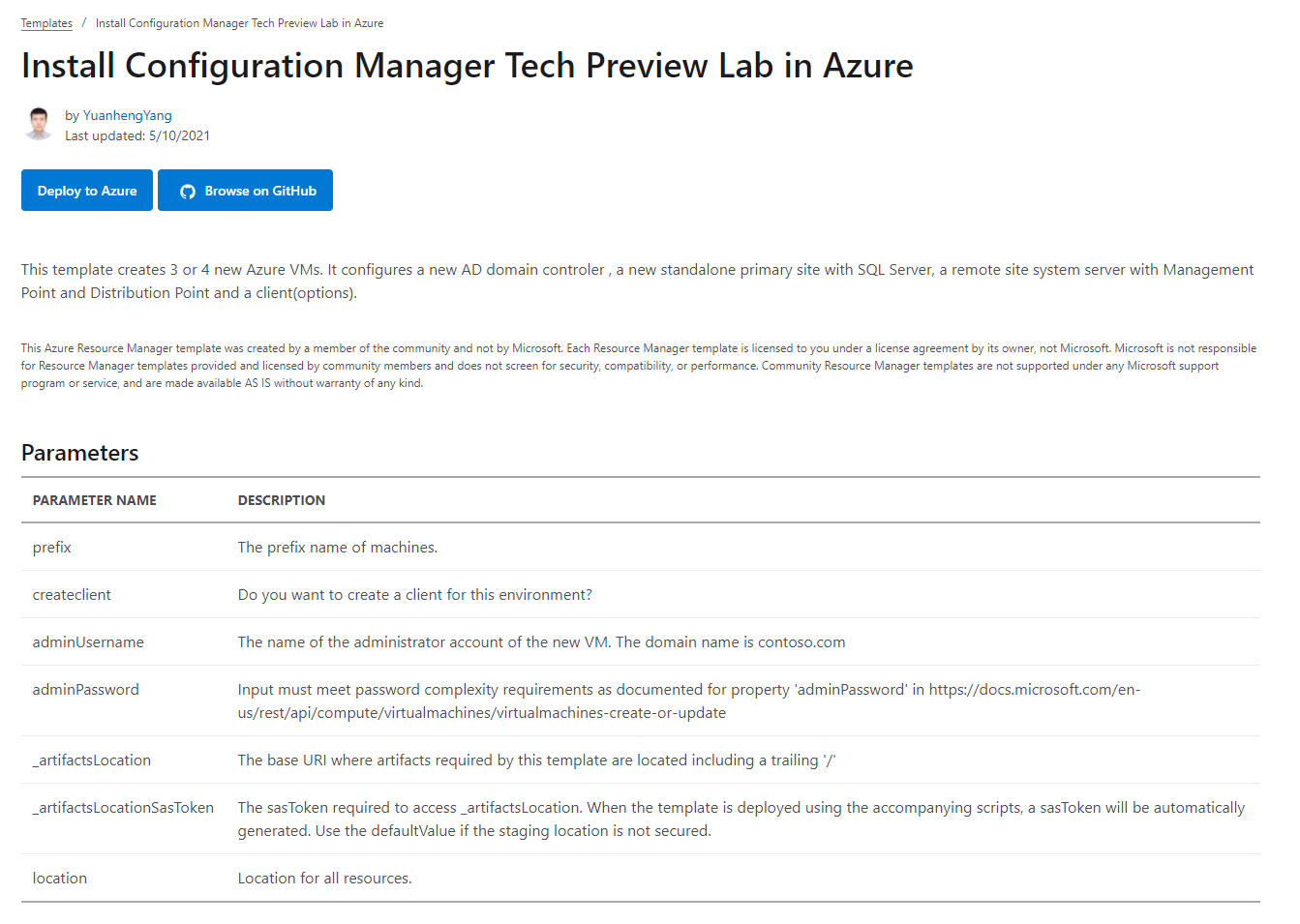
Log into your account, and you will see this:
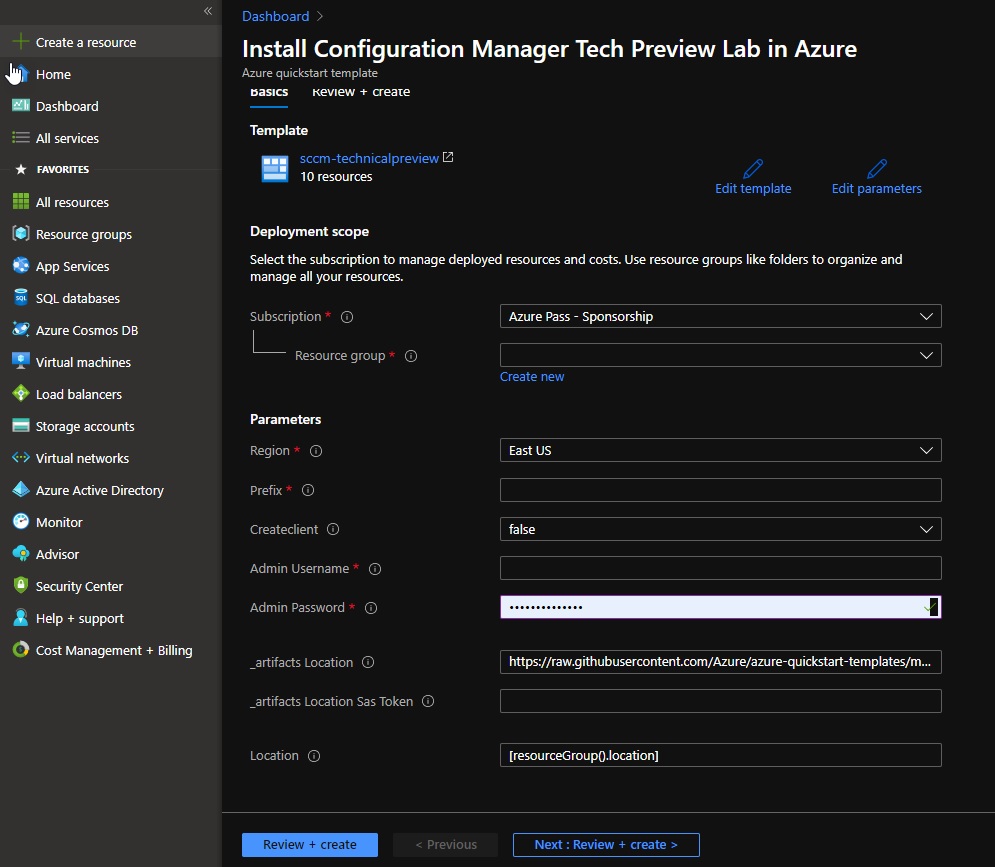
- Subscription : All resources in an Azure subscription are billed together.
- Resource Group : A resource group is a collection of resources that share the same lifecycle, permissions, and policies.
- Region : Choose the Azure region that’s right for you and your customers. Not every resource is available in every region.
- Prefix : The prefix name of machines.
- Createclient : Do you want to create a client for this environment?
- Admin Username : The name of the administrator account of the new VM. The domain name is contoso.com
- Admin Password : Input must meet password complexity requirements as documented for property ‘adminPassword’ here.
- _artifacts Location : The base URI where artifacts required by this template are located including a trailing ‘/’
- _artifacts Location Sas Token : The sasToken required to access _artifactsLocation. When the template is deployed using the accompanying scripts, a sasToken will be automatically generated. Use the defaultValue if the staging location is not secured.
- Location : Location for all resources.
You can edit the template to configure the VM model, disk type, network subnet address, OS version, and more. Read more about resources and prices.

Click on resources to see your resource templates.
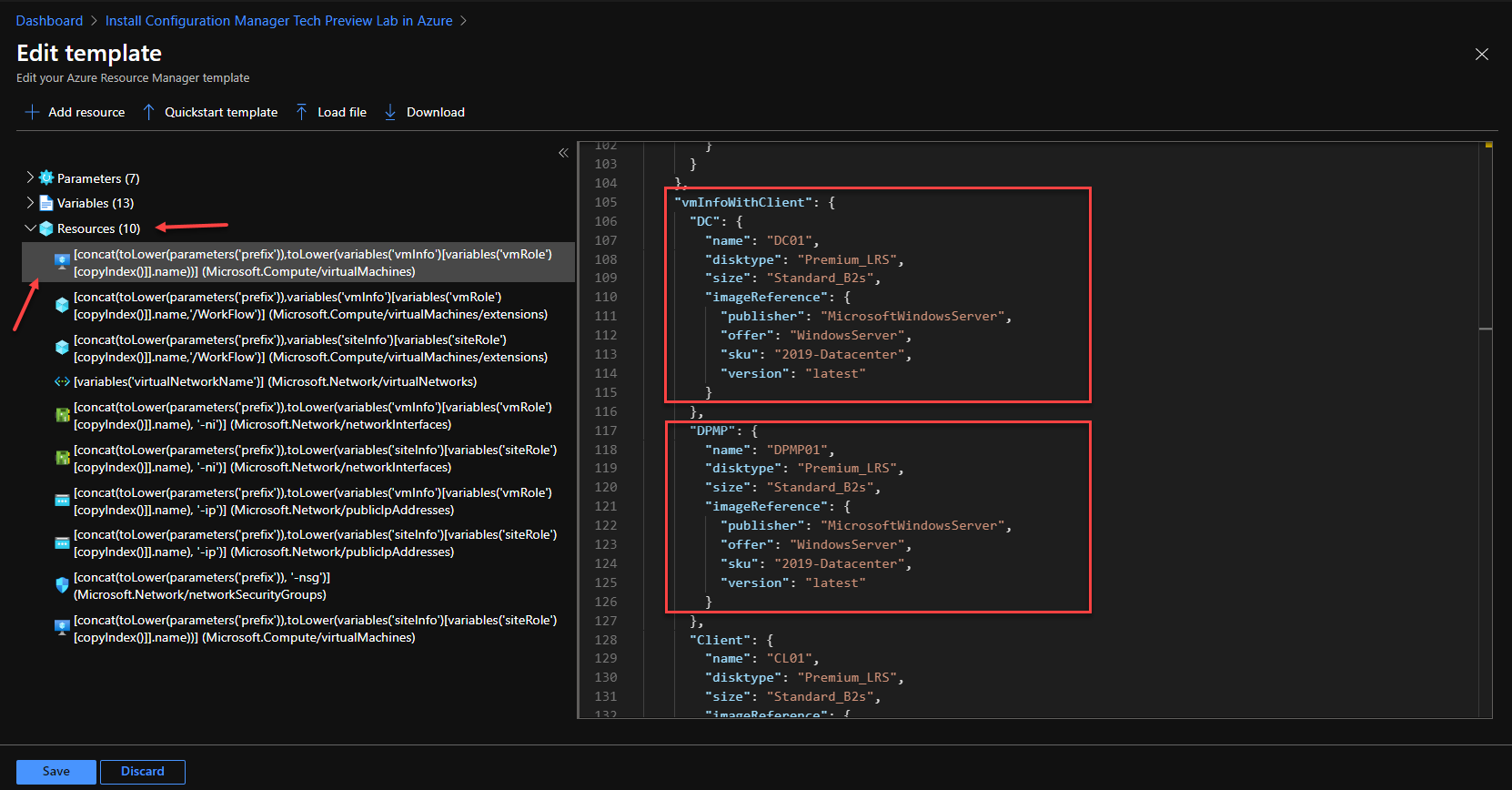
By default, disktype = Premium_LBS, vm model = Standard_B2s and Operation System = 2019-DataCenter.
In this example, I changed the disktype, VM model, and OS of my VM “DC”, you can change these configs for all VM’s.
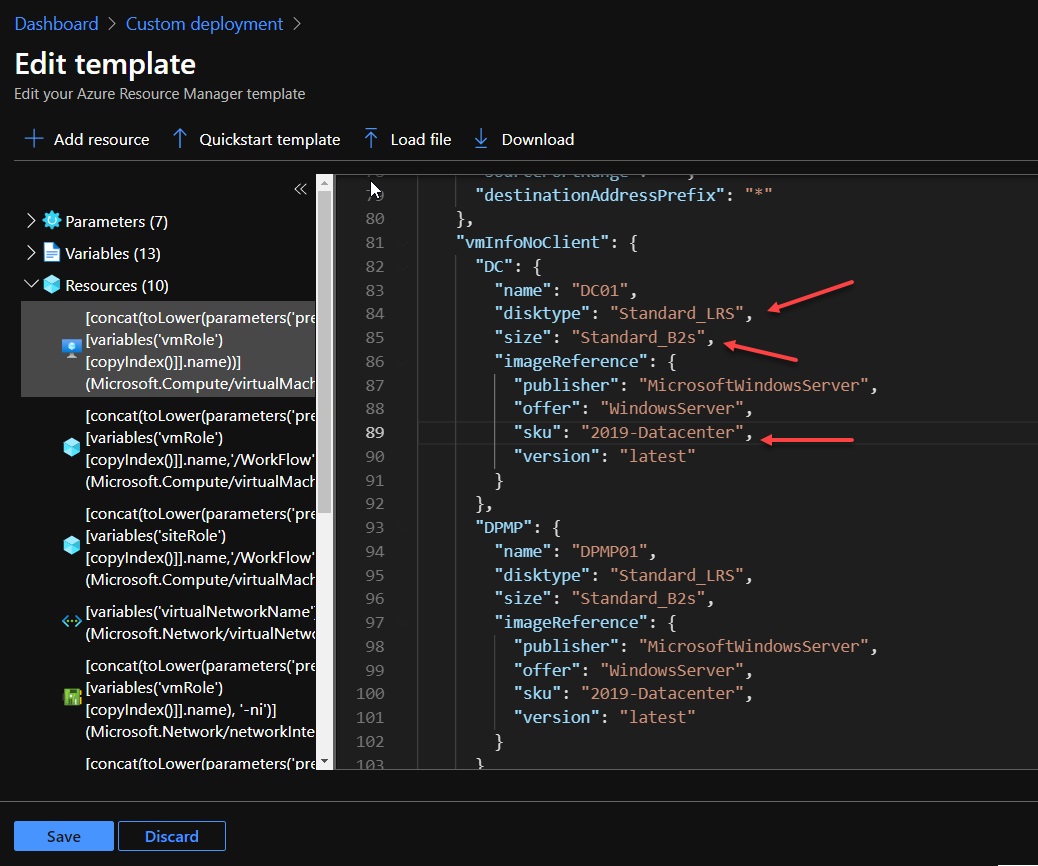
I’m not recommending these configurations. It’s only to show what you need to change if you decide to change anything. Your environment is your responsibility.
Now that I will create a custom deployment, it’s strongly recommended to create a new resource group.
Click in Next : Review + create >

A validation check will be displayed, and you can download your template for automation (JSON file), Now click on Create.
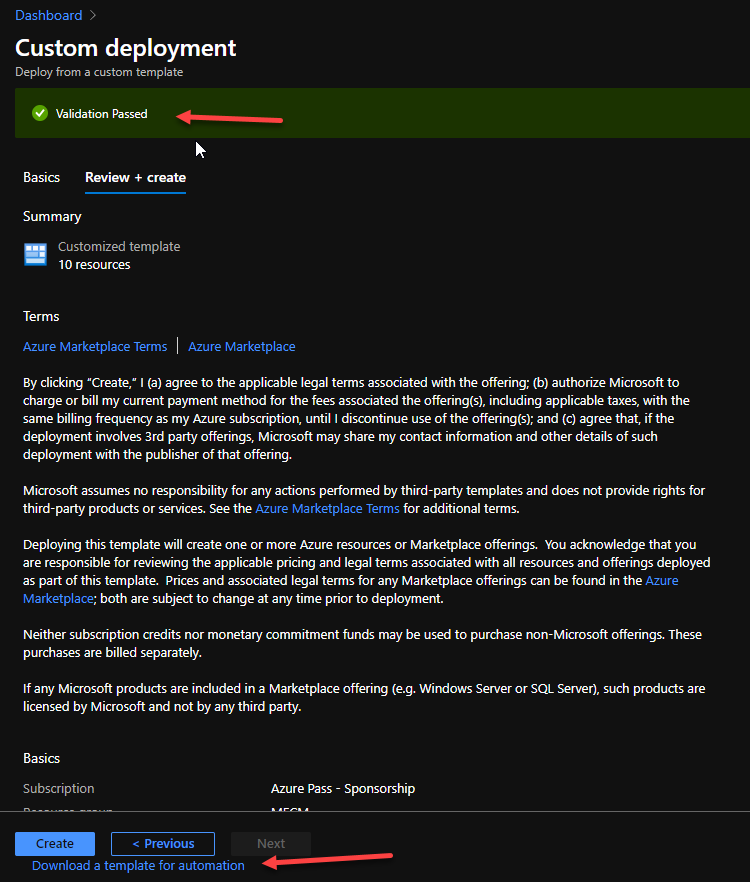
Your deployment is in progress and will be finished in around 30 minutes.
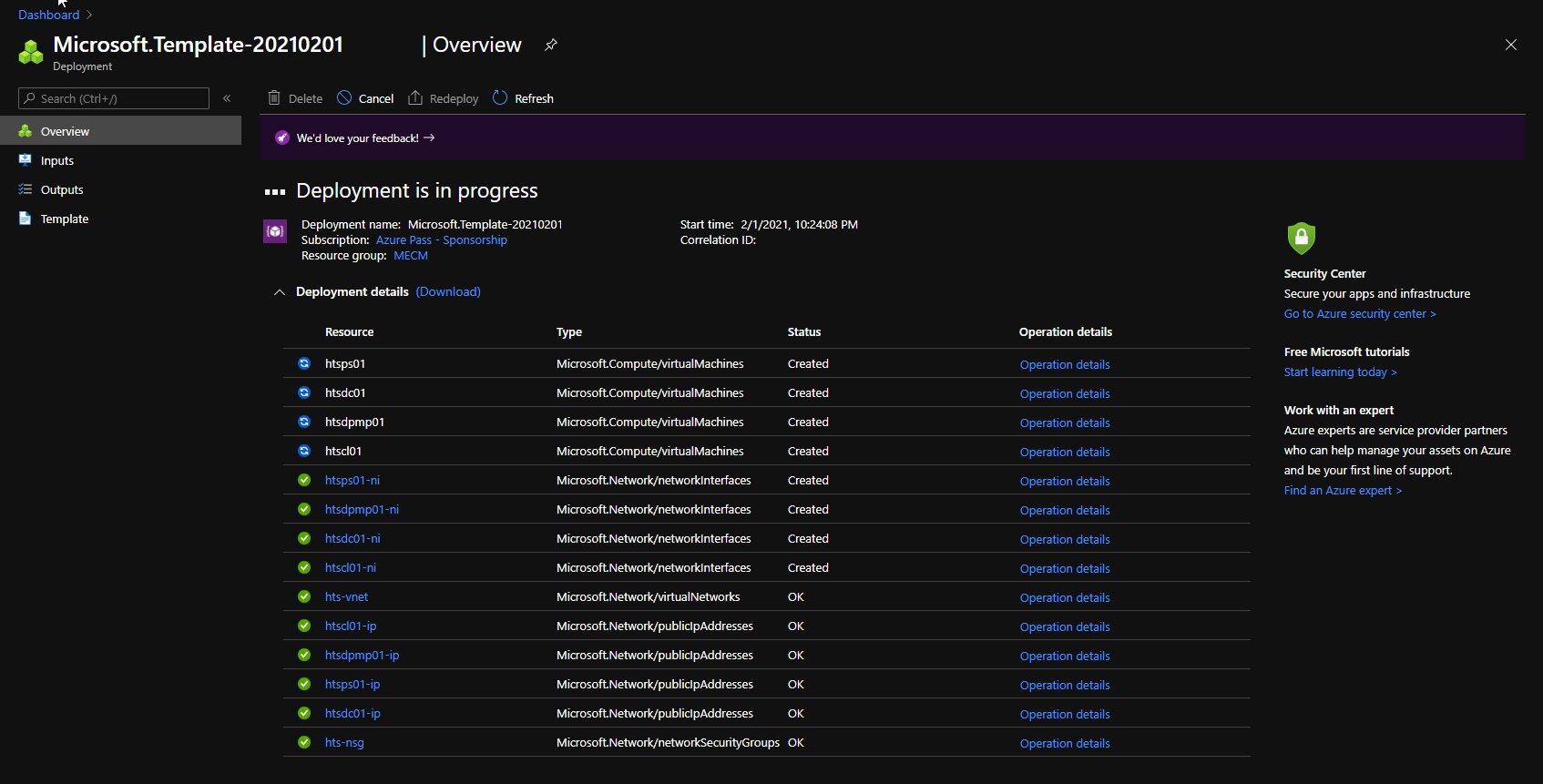
Finally!
Go to the resource group, connect to your VM’s, and start the MECM environment lab.

Don’t forget to stop using resources that are not in use.
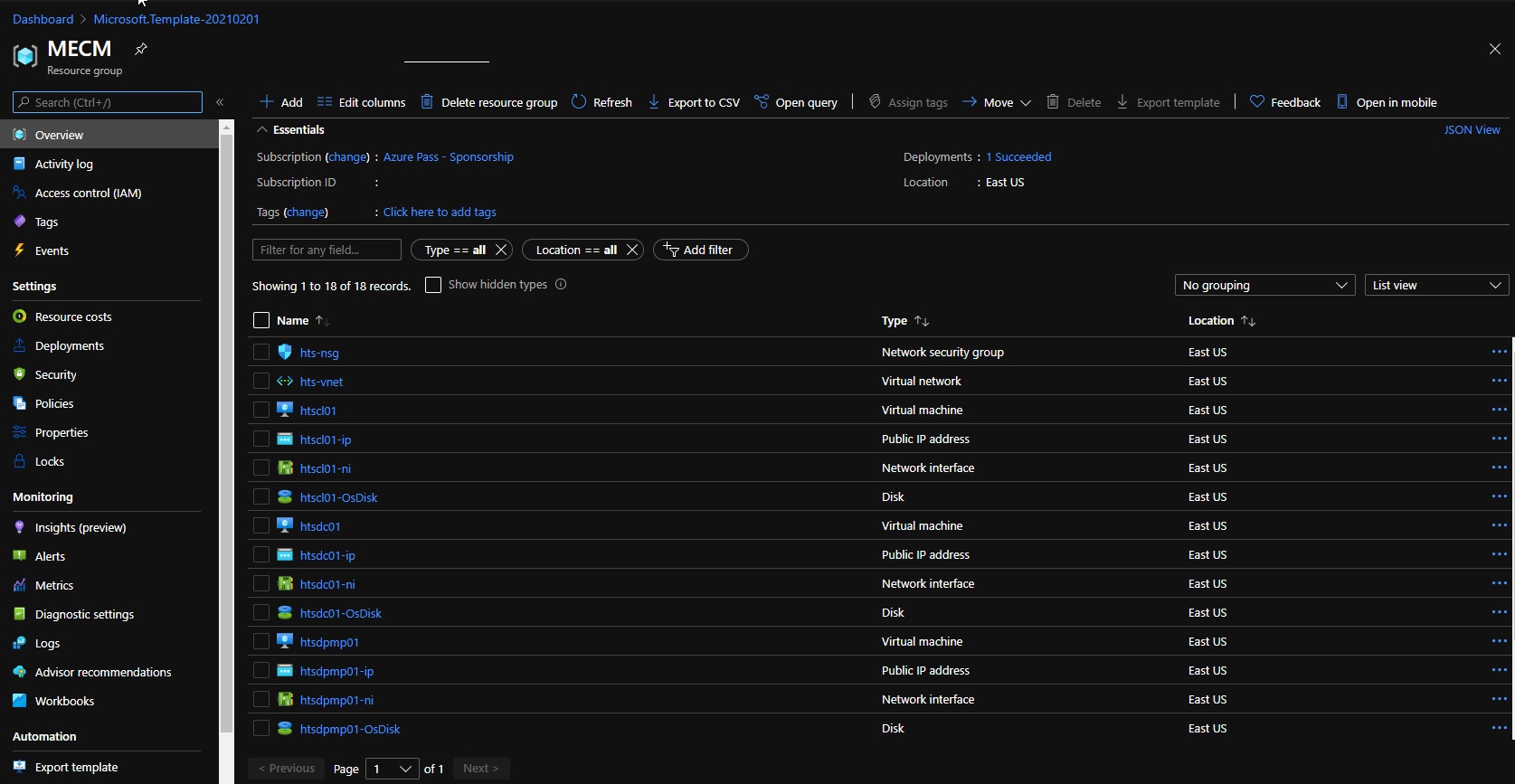
Comment below if this post help you 😉


Your article is very helpful thanks. For some reason Configuration Manager isn’t being installed at all for me.
All the VM’s deploy fine and no errors during deployment. When I check all of the servers there is no Configuration Manager installed. Am I meant to do something else? Thanks